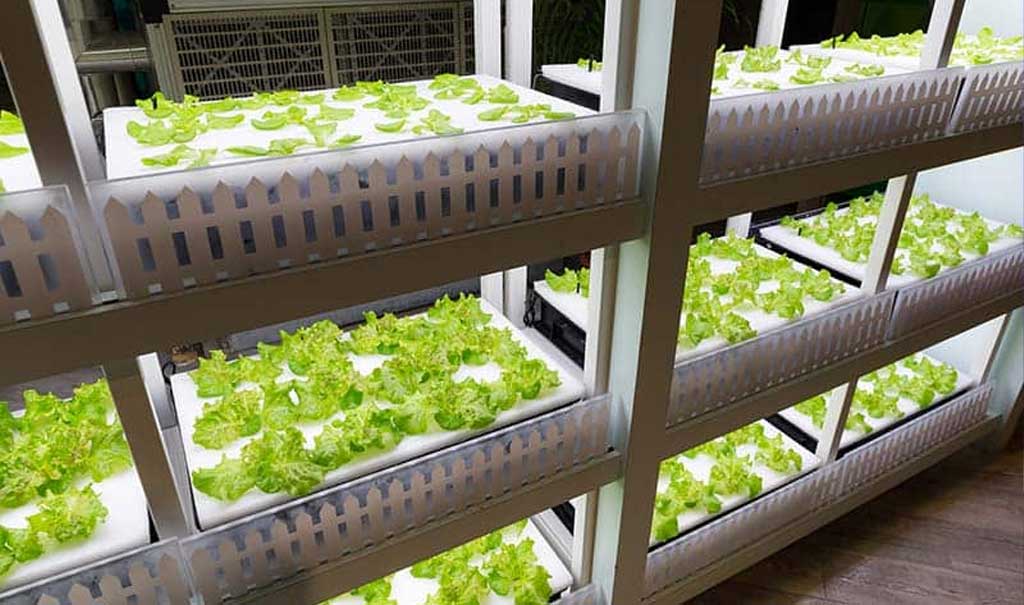Light is life in a grower’s world.
Plant cultivation facilities that rely on artificial lighting know that not all light sources are created equal. As indoor cultivation has become more popular, those facilities have discovered that LED lighting is their best option for optimum plant growth. Several factors account for these positive effects of LED lighting on plant growth.
1. LED lighting reduces a facility’s utility costs.
The United States Department of Agriculture (USDA) has determined that artificial lighting accounts for up to one third of the total cost of indoor plant cultivation. LED lighting produces better quality illumination than traditional grow light systems with less than half of the electrical energy input. Those cost savings can be reallocated to other aspects of a facility’s operations to improve plant growth and yield.
2. LED lighting can be tuned to increase lighting wavelengths that plants need for optimum chlorophyll production.
Plants produce different forms of chlorophyll at different wavelengths within the visible lighting spectrum (400nm to 700nm). LED lighting for plant growth can be tuned to generate the most desirable form of chlorophyll that a plant needs at each stage of its growth cycle. Unlike high-pressure sodium or other forms of commercial indoor lighting, LED lighting gives growers the flexibility to choose specific wavelengths that coincide with the unique needs of each plant from seedling through cultivation.
3. LED lighting systems can be configured to provide optimum photosynthetic photon flux density.
Photosynthetic flux density (PPFD) refers to the total amount of light that actually arrives at a plant surface. Higher PPFD levels generally translate into better plant quality and higher indoor crop yields. Because LED lighting systems operate at lower physical temperatures than traditional indoor lighting, LED fixtures can be placed closer to plant surfaces to generate those higher PPFD levels.
4. Cooler physical operating temperatures improve the overall indoor growing environment.
Temperature and humidity control are critical for indoor growing facilities. Lighting systems that add too much heat to an indoor growing environment force a facility operator to install complex control systems to compensate. LED lighting for plant growth minimizes or completely eliminates this requirement, particularly when engineered with passive thermal management systems like our OpticPAR™ LED grow lights. This produces a more stable growing environment with fewer temperature and humidity variations that can harm a plant’s development.
5. LED lighting produces larger plants and better crop yields.
Indoor cultivation that utilizes LED lighting is superior to crop production that relies on older artificial lighting sources, and in some ways it may produce more bountiful harvests than outdoor cultivation that is subject to inconsistent amounts of sunshine and variations in weather patterns. LED lighting for plant growth gives an operator unprecedented control over all aspects of the plant’s environment. Multiple university studies support this conclusion.
6. LED lighting is durable.
With a small amount of regular maintenance, an indoor LED grow light system will generate high-quality light for more than 50,000 hours of use. As with the cost savings from LED lighting that are available through lower utility expenditures, this durability allows a cultivation facility to devote more of its budget to improving crop yields, rather than constant maintenance of the lighting equipment.
Indoor plant cultivation facilities will likely see further benefits from LED lighting for plant growth as more of those facilities switch over to LED systems. To serve those facilities, SpecGrade LED in Columbus, Ohio, has developed several new lines of LED grow lighting that incorporate our advanced OpticPAR™ LED technology for superior indoor plant growth.
Regardless of whether your growing facility is a large commercial operation, a linear greenhouse, or a vertical growing structure, SpecGrade LED has LED lighting for crop growth that will outperform all forms of more traditional indoor grow lighting.


